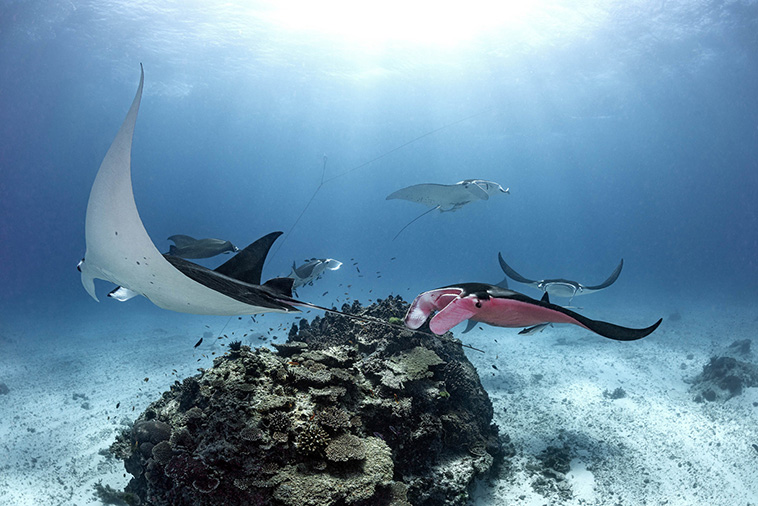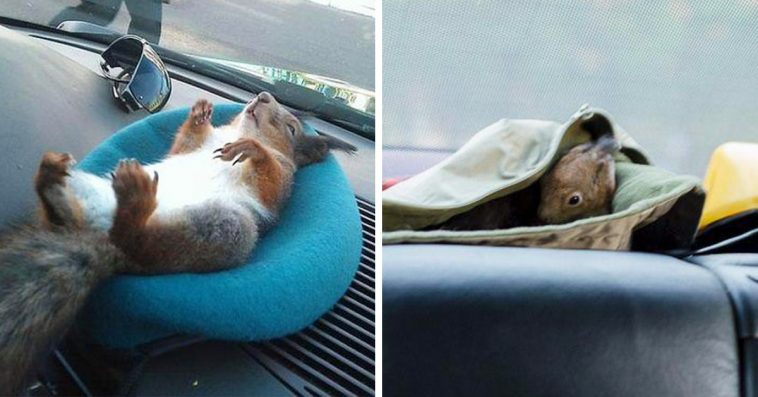Birds really don’t get the love they deserve.
When people think of cute animals, they rarely seem to think of birds, but this is a mistake.
Birds are incredibly fascinating creatures who come in all shapes and sizes, and some birds are just ridiculously cute!
Don’t believe us? Just check out these round, grumpy-looking and totally adorable little birdies:
These beautiful, ball-shaped birds are called Bearded Reedlings.
They’re only about 16 cm in size and they have a very cute and unique look: not only do they have a very spherical appearance, but they’re also rocking quite a dramatic eye-look.
Their tiny bodies are decorated with black markings that stretch out beneath their eyes as if they’re constantly wearing a full face of metalhead makeup.
Martin Mecnarowski
As a result, these little birds constantly look a little bit angry, and because of their small size and poofy bodies, the effect is both hilarious and adorable.
The Bearded Reedling’s markings are actually called “moustaches”, but let’s be honest: that’s eyeliner!
Only the male reedlings have these markers, which makes it quite easy to tell the males and females apart.
Peter von Bagh
Apart from looking like cute, angry, little flying balls, the Bearded Reedlings have another adorable trait: they are pros at stretching.
Kaeptn Chemnitzeise.JPG
Bearded Reedlings quite enjoy chilling out with their legs fully stretched out into a split.
They like to grab on to two branches, one for each foot, and just hang out.
We wish we looked that relaxed while attempting the splits!
Nick Goodrum
The Bearded Reedlings are found in Europe and Asia and usually live in reed beds.
They tend to live in flocks and they survive on a diet of bugs, spiders, snails and reeds.
These fluffy little birds prove just how cute and cuddly-looking birds can be. And that when you are small and fluffy, looking grumpy isn’t very intimidating – it only makes you cuter.
Source
Every photographer’s dream is to get the opportunity to capture a unique photo, something the world has never seen before. Nature is ever-changing, complex, vibrant, and rich, so it is certainly challenging for a wildlife photographer to leave everyone open-mouthed.
Yet, in November 2016, biologist Vanessa : managed to film probably the largest swarm of sea turtles to date, while flying her drone over the Costa Rican coastline.
The drone was used in a study that investigated olive ridley sea turtles and their reproduction.
The footage reveals thousands of them while swimming across a region just off Ostional National Wildlife Refuge.
There is about one turtle for every square meter, and as the drone ascends, new turtles are rising from below the surface.
Bézy said:
“I immediately knew there was something special going on. To this day I’m still blown away by the video. They look like bumper cars out there.”
Ostional was established in 1983 as a protected area specifically for the turtles, but as they are considered a vulnerable species, this might be the last time we see swarms this dense.
Roldán Valverde, scientific director of the Sea Turtle Conservancy in Florida, said:
“This is the only time I’ve seen a video capturing this phenomenon in the water. Most of the photography documenting this occurs on the beach.”
Bézy studies them and her goal is to raise awareness about the importance of protecting the species and hopes her footage will help it to remain robust. Even though these sea turtles are widespread, they have very few nesting sites globally.
Bézy worries about the rising tourism industry around the beaches where they nest, as regulations proposed to protect the area seem to not be enough.
Also, olive ridley sea turtle hatchlings have a very low survival rate into adulthood, so if we additionally threaten the population, it might crash fast.
She hopes that her investigation will find out the reason and the way such a great number of turtles gather there, especially in the period between August and October. This might be due to factors such as sand type, beach orientation, and sea currents.
These findings might provide an answer that can maximize the chances for survival for the species.
Olive ridley sea turtles are among the six sea turtle species that the International Union for Conservation of Nature listed as threatened, so mass aggregations of this kind are a critical part of their life cycle.
Source
Yet, in November 2016, biologist Vanessa : managed to film probably the largest swarm of sea turtles to date, while flying her drone over the Costa Rican coastline.
The drone was used in a study that investigated olive ridley sea turtles and their reproduction.
The footage reveals thousands of them while swimming across a region just off Ostional National Wildlife Refuge.
There is about one turtle for every square meter, and as the drone ascends, new turtles are rising from below the surface.
Bézy said:
“I immediately knew there was something special going on. To this day I’m still blown away by the video. They look like bumper cars out there.”
Ostional was established in 1983 as a protected area specifically for the turtles, but as they are considered a vulnerable species, this might be the last time we see swarms this dense.
Roldán Valverde, scientific director of the Sea Turtle Conservancy in Florida, said:
“This is the only time I’ve seen a video capturing this phenomenon in the water. Most of the photography documenting this occurs on the beach.”
Bézy studies them and her goal is to raise awareness about the importance of protecting the species and hopes her footage will help it to remain robust. Even though these sea turtles are widespread, they have very few nesting sites globally.
Bézy worries about the rising tourism industry around the beaches where they nest, as regulations proposed to protect the area seem to not be enough.
Also, olive ridley sea turtle hatchlings have a very low survival rate into adulthood, so if we additionally threaten the population, it might crash fast.
She hopes that her investigation will find out the reason and the way such a great number of turtles gather there, especially in the period between August and October. This might be due to factors such as sand type, beach orientation, and sea currents.
These findings might provide an answer that can maximize the chances for survival for the species.
Olive ridley sea turtles are among the six sea turtle species that the International Union for Conservation of Nature listed as threatened, so mass aggregations of this kind are a critical part of their life cycle.
Source
Animals
Soldier Rescues Baby Squirrel And Saves His Life, Now They Drive Around Town In Their Taxi Every Day
We love unusual friendships, and these two friends share an unexpected but beautiful bond.
Masik is a squirrel, and Pyotr Pankratau is a a former Belarusian army soldier, and the two friends spend all their time together.
It all started when Pankratau was still in the army, and he found a little squirrel in desperate need of help. The baby squirrel was lying dying by the side of the road, but Pankratau took pity on it and saved its life by nursing it back to health.
Pankratau named the squirrel Masik and used a syringe to feed it milk and help it grow strong and healthy. After that, Pankratau and Masik were bonded for life, and when Pankratau left the army he, of course, took Masik with him.
Now, Pankratau drives a taxi and Masik is always along for the ride.
When Pankratau found Masik, the little squirrel was weak and suffering.
Pankratau knew that the squirrel wouldn’t survive if he didn’t save it.
After saving the squirrels life, he named it Masik.
Now, Masik is thriving and follows his saviour all over Minsk.
Masik loves going to work with Pankratau, who drives a taxi.
While Pankratau drives, Masik just hangs out and enjoys his company.
Pankratau loves his little ride-along, and always makes sure he’s safe and comfy.
These two love each other so much. And plan on driving around together for a long, long time.
Source
Masik is a squirrel, and Pyotr Pankratau is a a former Belarusian army soldier, and the two friends spend all their time together.
It all started when Pankratau was still in the army, and he found a little squirrel in desperate need of help. The baby squirrel was lying dying by the side of the road, but Pankratau took pity on it and saved its life by nursing it back to health.
Pankratau named the squirrel Masik and used a syringe to feed it milk and help it grow strong and healthy. After that, Pankratau and Masik were bonded for life, and when Pankratau left the army he, of course, took Masik with him.
Now, Pankratau drives a taxi and Masik is always along for the ride.
Source


































